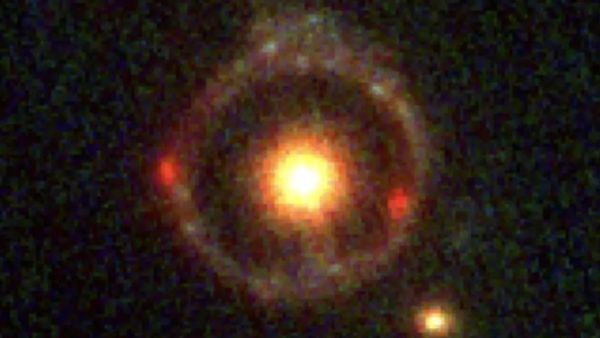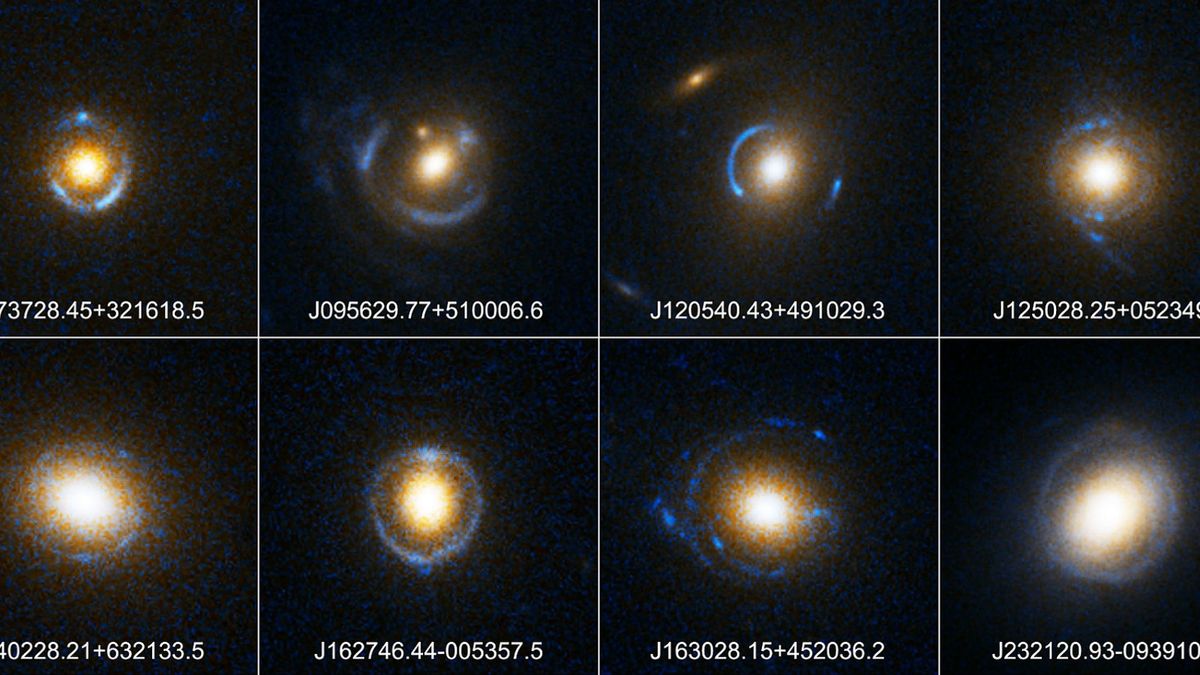Welcome to DU!
The truly grassroots left-of-center political community where regular people, not algorithms, drive the discussions and set the standards.
Join the community:
Create a free account
Support DU (and get rid of ads!):
Become a Star Member
Latest Breaking News
Editorials & Other Articles
General Discussion
The DU Lounge
All Forums
Issue Forums
Culture Forums
Alliance Forums
Region Forums
Support Forums
Help & Search
Science
Related: About this forum'Einstein ring' snapped by James Webb Space Telescope is most distant gravitationally lensed object
'Einstein ring' snapped by James Webb Space Telescope is most distant gravitationally lensed object ever seenBy Harry Baker published about 14 hours ago
The James Webb Space Telescope has taken a stunning image of a perfectly formed Einstein ring, which is also the most distant gravitationally lensed object ever detected.

In the field of one of JWST's largest-area surveys, COSMOS-Web, an Einstein ring was discovered around a compact, distant galaxy. It turns out to be the most distant gravitational lens ever discovered by a few billion light-years.
Photos snapped by the James Webb Space Telescope (JWST) have revealed the farthest-ever example of an "Einstein ring." The record-breaking halo of warped light, which is a whopping 21 billion light-years away, is unusually perfect and surrounds a mysteriously dense galaxy.
An Einstein ring is an extremely rare type of gravitationally lensed object that was first predicted by Albert Einstein's theory of relativity. Gravitational lensing occurs when the immense gravity of a massive foreground object, such as a galaxy cluster or a black hole, warps space-time around itself; light emitted by more distant objects, such as galaxies or supernovas, that passes through this warped space-time also appears curved and warped from our perspective on Earth.
This effect also magnifies the light of the object being lensed, similar to how a magnifying glass works, allowing astronomers to study distant objects in greater detail than is normally possible. Most gravitationally lensed objects form arcs or partial rings that surround the foreground object. But a true Einstein ring forms a complete circle around the closer entity, which is possible only when the distant object, foreground object and observer are perfectly aligned.
In a new study uploaded Sept. 14 to the preprint server arXiv and accepted for publication in the journal Nature Astronomy, researchers discovered the new eerily circular Einstein ring, named JWST-ER1, within the COSMOS-Web survey, a detailed map of more than 500,000 galaxies captured during a 200-hour continuous JWST observation.

A collection of incomplete and near-perfect Einstein rings photographed by NASA's Hubble telescope. In order to get a perfect circle, the background object, foreground object and observer must be perfectly aligned. (Image credit: NASA)
More:
https://www.space.com/james-webb-space-telescope-einstein-ring-gravitationally-lensed
2 replies
 = new reply since forum marked as read
Highlight:
NoneDon't highlight anything
5 newestHighlight 5 most recent replies
= new reply since forum marked as read
Highlight:
NoneDon't highlight anything
5 newestHighlight 5 most recent replies
'Einstein ring' snapped by James Webb Space Telescope is most distant gravitationally lensed object (Original Post)
Judi Lynn
Sep 2023
OP
Permanut
(7,357 posts)1. Einstein would have loved this..
me too.
2naSalit
(97,385 posts)2. I'm sure he would have.
Fascinating!